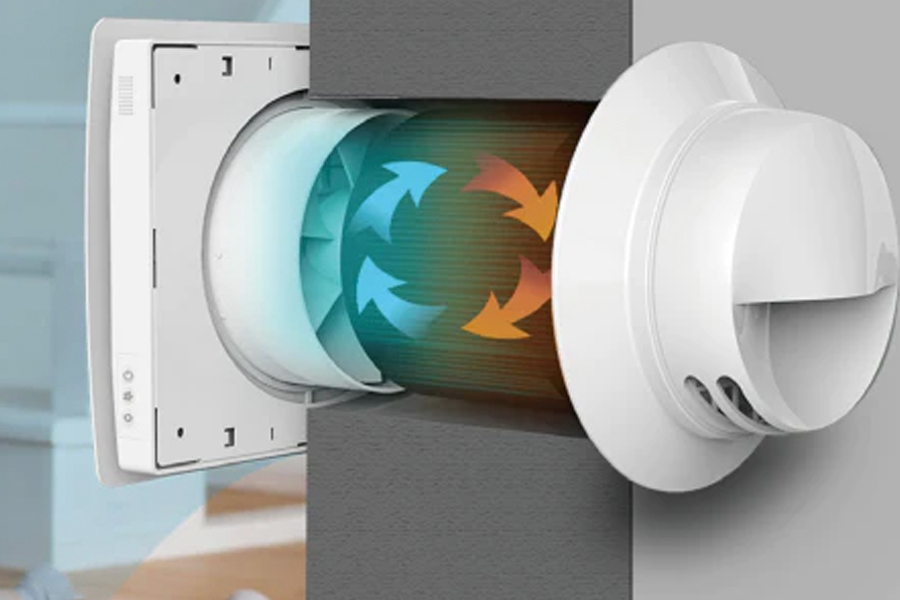
Systems of Decentralised Ventilation with Heat Recovery
When deciding between centralized and decentralised mechanical ventilation systems with heat recovery (MVHR), this is a question many people ask. It makes sense because, in comparison to gravity ventilation, MVHR systems are fairly expensive and it is a long-term investment.
The decentralised ventilation unit: how does it operate?
Different terms for decentralised heat recovery units can be found when searching the Internet for information and opinions about decentralised units. We call them push-pull HRUs or single-room HRUs, compact wall units, through-wall ventilation units, ductless heat recovery ventilation (HRV system), and compact ventilation systems with heat recovery, decentralised mechanical ventilation units, and so on. Without a doubt, a wall opening is necessary for the installation of the decentralised unit. However, the theory of unit operation is far more intricate.
The primary goal of both a normal centralized MVHR system and a decentralised one is to remove stale, dirty air from the room and introduce fresh air. The decentralised systems function differently since they are ductless, meaning that no ducting is needed for the air supply or extraction process. A separate supply air and extract air ducting system is used for distribution in a typical whole-house HRV system.
Heat transfer
Heat transfer between the two airflows occurs in a heat exchanger. The wall-mounted, decentralised device of the push-pull type has a regenerative heat exchanger installed. The thermal energy of the evacuated air from the room remains. This energy is moved to the heat exchanger’s mass during the extract air mode, where it builds up. A cycle typically lasts 70 seconds. After that, the fan turns off, lets in some fresh air, and resumes its spin. Heat exchangers employ collected energy to warm the cold outside air.
Does mixing of airflow occur?
The fan delivers air and extracts it during the pauses between cycles, preventing any mixing of air flows because cycles change one after the other in time intervals. The single fan of our single-room heat recovery equipment prevents the air supply and extract modes from operating at the same time. Nonetheless, wall-mounted HRUs with two fans that disperse both airflows simultaneously are available as solutions.

